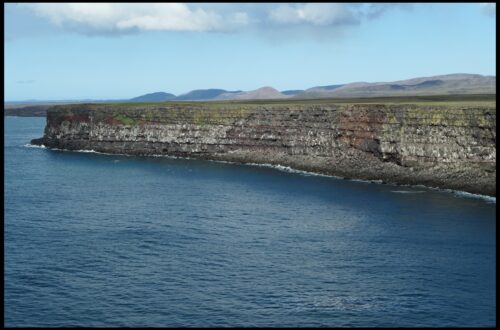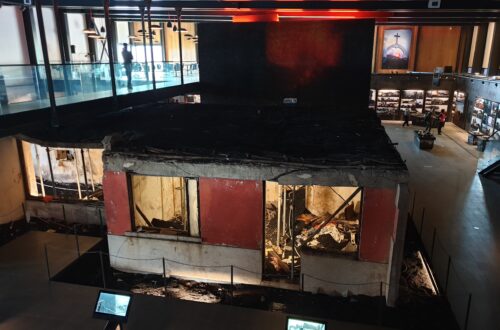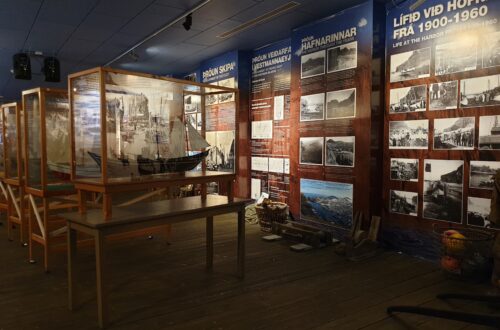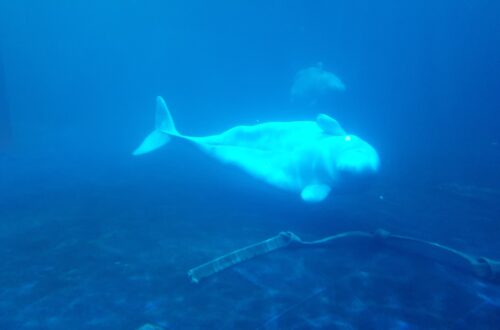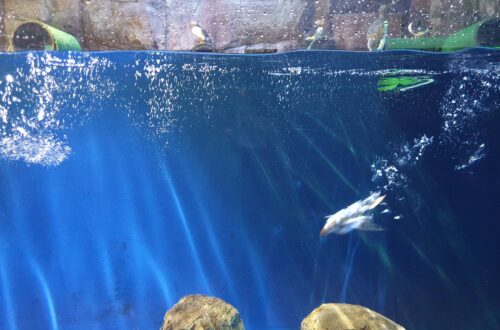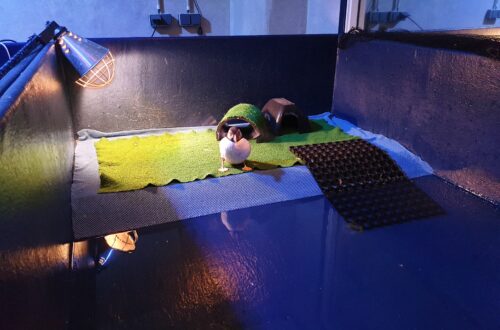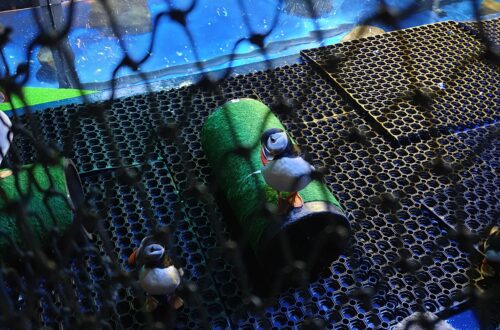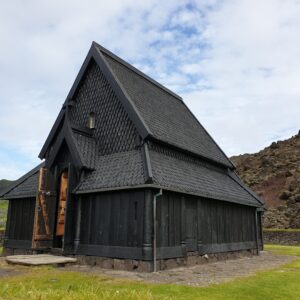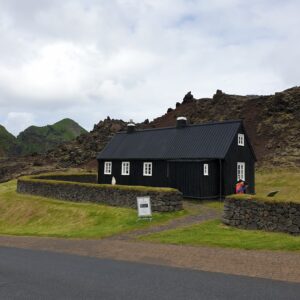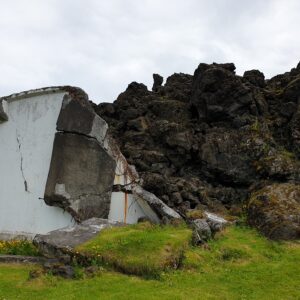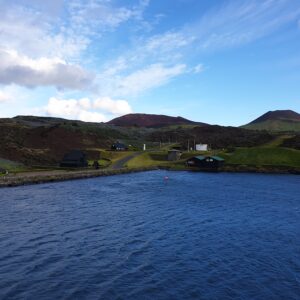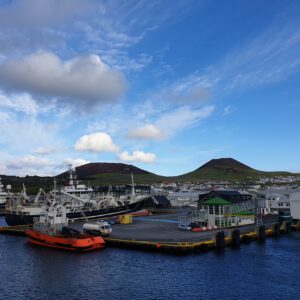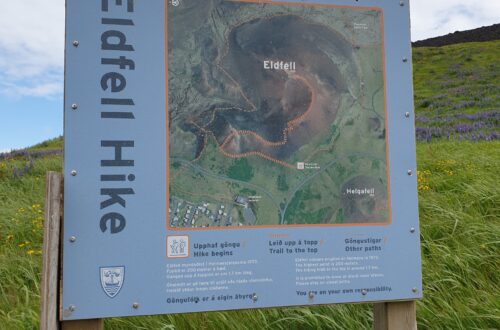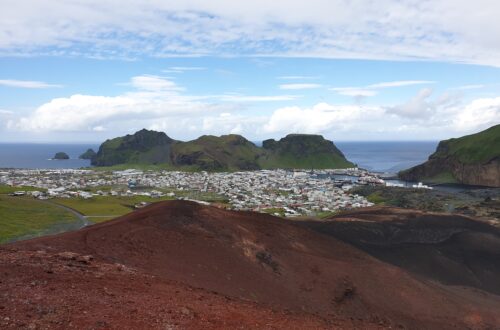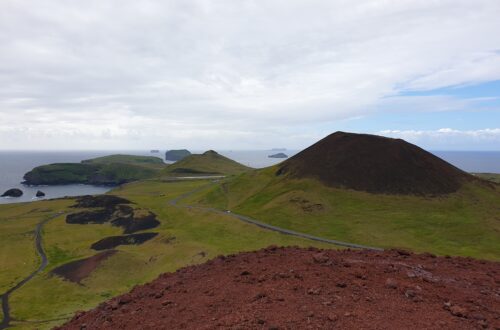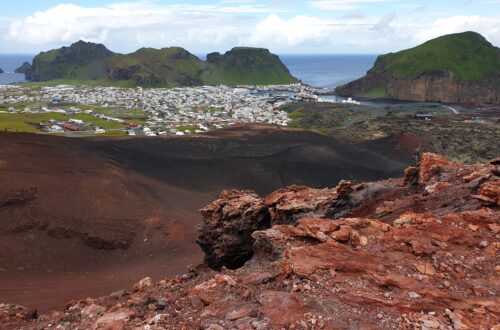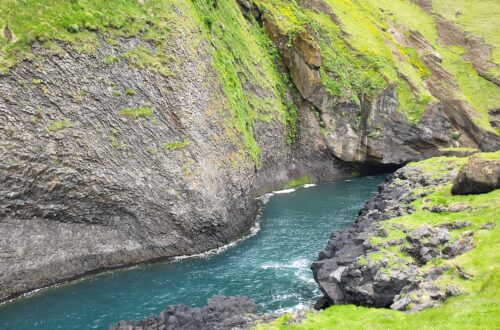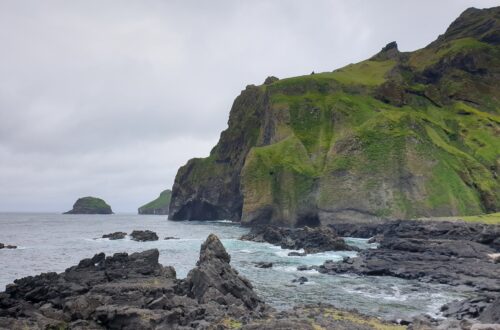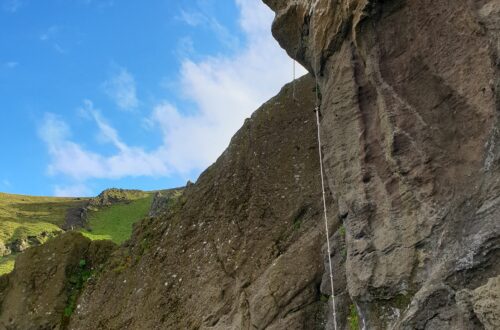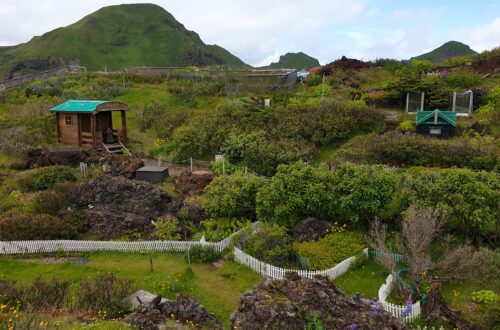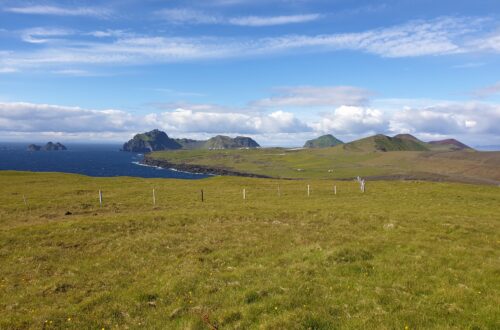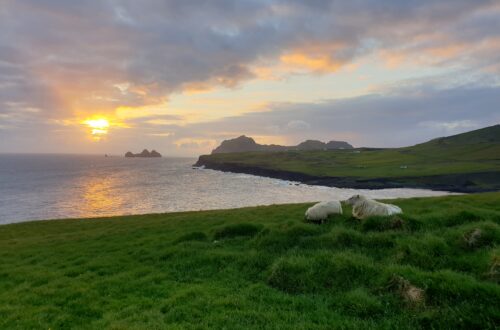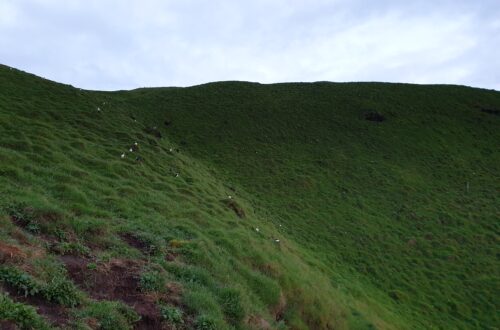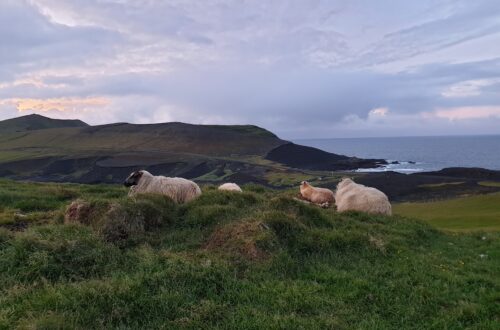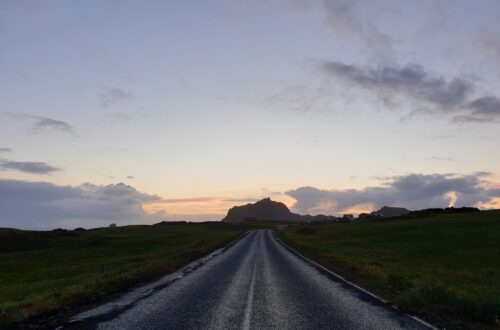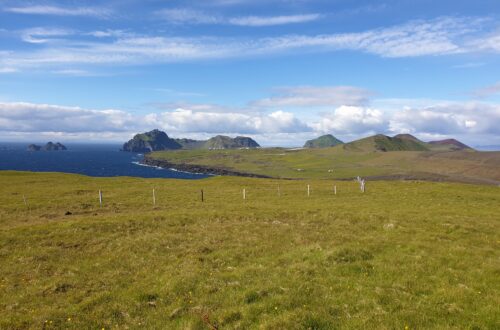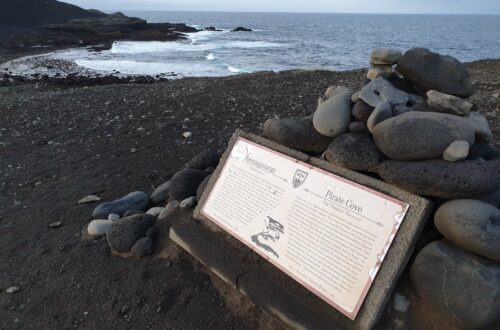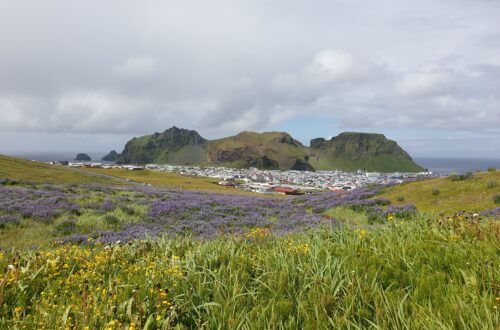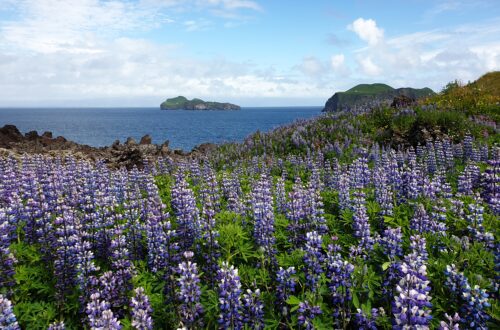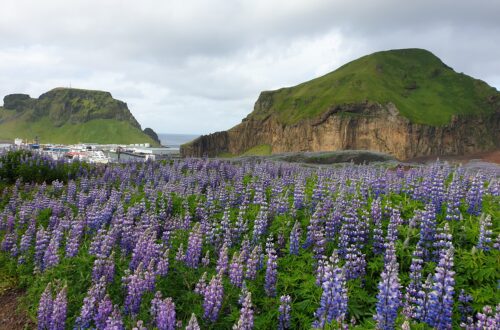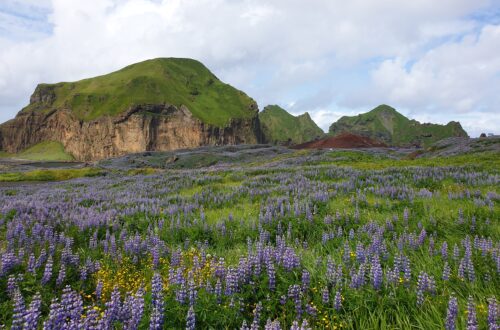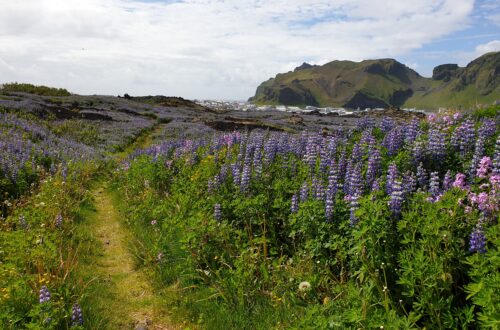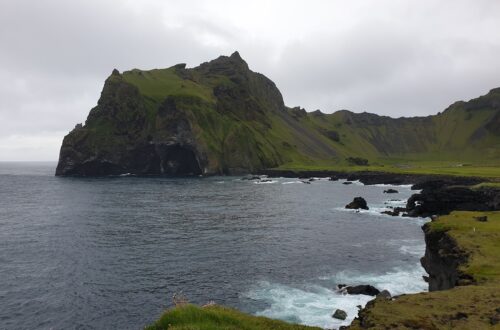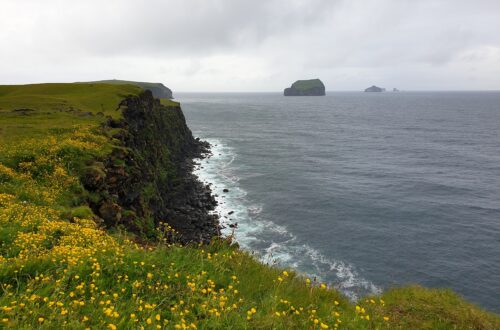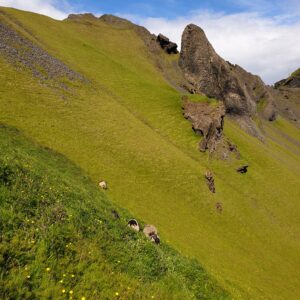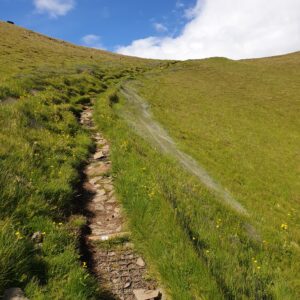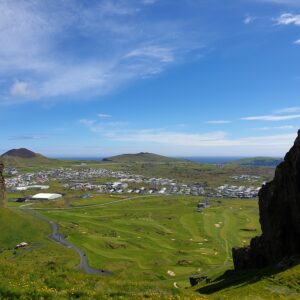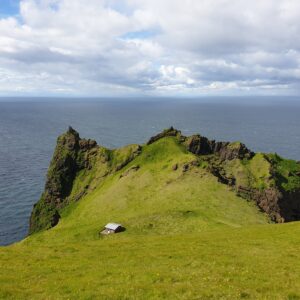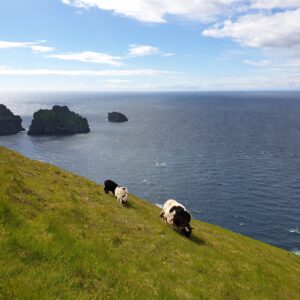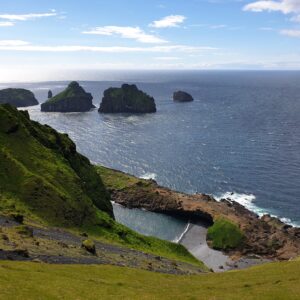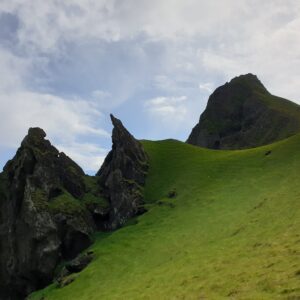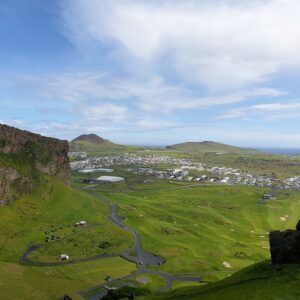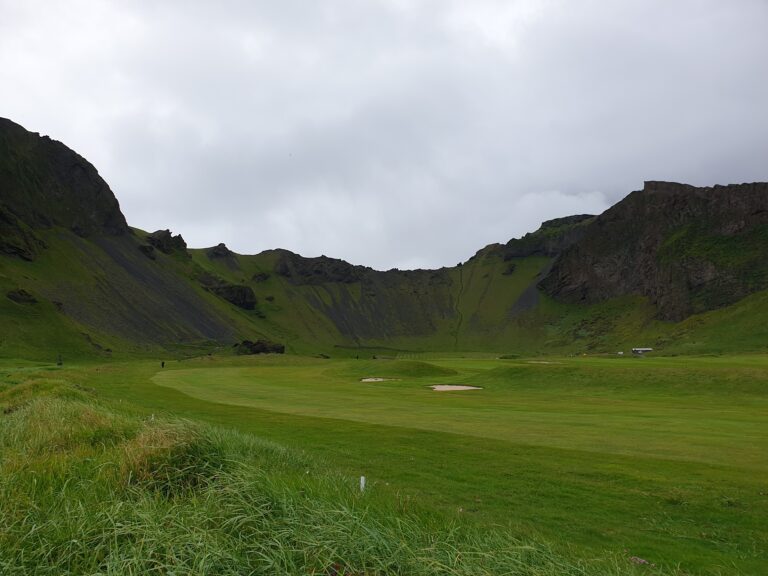
Westman Islands / Vestmannaeyjar
The small archipelago offers an amazing amount of sights and activities not to be missed.
The Vestmannaeyjar consist of 15 islands and other skerries and rocks, of which only the (by far the largest) main island Heimaey is inhabited. They are around 12 km south of the coast and were created by underwater eruptions of their own volcanic system around 10,000 – 12,000 years ago.
One of Iceland’s first settlers, Hjörleifur Hróðmarsson, was killed by his Irish slaves, whereupon his brother Ingólfur Arnarson pursued the slaves to the islands and killed them there. Since the Vikings referred to people from Ireland and Scotland as Vestmenn (“people from the west”), the islands were henceforth called the Westman Islands. However, another theory is that Vikings who settled themselves in the British Isles were referred to as Vestmenn. Either way, the name and archeological finds could indicate that the islands had been inhabited by people of Irish/Scottish or Norse origin before the official conquest.
The so-called “Turkish attack” in the summer of 1627 was decisive in the recent history of the islands, when pirates from North Africa attacked the islands and killed or enslaved all the island’s inhabitants. Life on the island was very hard for a long time and it was only with the advent of motorized boats and the construction of a harbor at the beginning of the 20th century that the population finally rose from around 600 (around 1890) to 4,500 today.
Extremely significant were the volcanic eruptions of 1963-1967 (formation of the island Surtsey, now a nature reserve and UNESCO World Heritage Site, access only for scientists) and 1973 (eruption of the volcano Eldfell on Heimaey, destroying around 400 houses).
Tip: The Facebook group „Gamlar ljósmyndir úr Eyjum“ shows old (often black and white) photos of life on the Westman Islands. An exciting insight into everyday life in the past.
There are two ways to reach Heimaey. The most common option is by the ferry Herjólfur. It runs up to seven times a day from Landeyjahöfn (130 km / 1h50min from Reykjavík on the south coast) and the journey takes around 40min. The price for an adult is 2,200 ISK (= 14 €, 15 $), for teenagers 1,100 ISK (= 7 €, 7.50 $), children under 12 years are free. It makes sense to take the car with you to be flexible on the island. A small car (less than 5m in length) costs 3,300 ISK (= 21 €, 23 $). Larger cars, campers or trailers correspondingly more.
Attention: in bad weather or high seas, the port in Landeyjahöfn cannot always be approached, which is why it is switched to Þorlákshöfn (50 km from Reykjavík), which is much further away. The ferry ride then takes about 2 hours 45 minutes. It is therefore always recommended not to leave the car at one of the ports, otherwise it can be difficult to find your way back.
The second option is by plane. Eagle Air flies 2-3 times a week from Reykjavík to the Westman Islands.
Tip: The best time to travel to the Westman Islands is from May to September. On the one hand, the weather is more moderate than in winter, on the other hand, most events take place then and museums have longer opening hours.
There are about ten restaurants on the island. Special mention should be made of Slippurinn by star chef Gísli Matt which specializes in fish but is only open in summer (approx. May – September). Einsi Kaldi and Gott are also recommended. Other restaurants also have pizza, hamburgers or Asian. In addition to two bakeries, there are also a Bónus and Krónan supermarket.
There is only a limited number of accommodation options on the island. In addition to a hotel, a few guest houses and apartments and a hostel, there is also a campsite (with the option of “glamping”, staying overnight in a large wooden barrel).
Eldheimar Museum: Absolutely stunning and exceptional museum about the Eldfell eruption in 1973, which was built around one of the houses that were buried at the time. A must!
Sagnheimar Folk Museum: A great museum that explains in detail the history and culture of the islands, from the first settlement to the pirate raid, the history of fishing and the volcanic eruption to the modern music festival. Educational and well worth!
SEA LIFE Trust Beluga Whale Sanctuary: The visitor center provides information about life in the sea in a small exhibition, puffins (which cannot be released into the wild) can be observed in a large terrarium and the history of the island’s beluga whales (the whales will be introduced to an outdoor area in the bay in Spring 2023). The guided tour with a look behind the scenes is particularly worthwhile.
Skansinn / Landlyst / Stave Church: A small fort built in the late 16th century and reinforced after the pirate raid. A cannon from 1586 can be seen. Also on the site is the oldest house on the island from 1848, which was restored in 2000 and moved to its current location. It houses a small medical museum and gives an exciting insight into the late 19th century on the island. Right next to it is a replica stave church, a gift from Norway for the 1000th anniversary of Christianity in Iceland. Also of interest is the water tank from 1932, destroyed and half buried under lava.
Eldfell: Possibly THE sight on Heimaey, the 1973 volcanic crater. You can walk up from both the town center and a car park at the foot of the mountain. At the very top there are still a few places in the stones where hot air escapes. You can also climb the second volcanic cone, Helgafell.
Elephant Rock and Kaplagjóta: The famous Elephant Rock is located at the western end of Herjólfsdalur. It can be visited both from the mainland on a walk and from the sea from a boat. Right next to it is Kaplagjóta (= horse gorge), here excess animals were allegedly drowned because horse keeping was restricted by law in the 16th century.
Spranga: Originally used to collect eggs from the birds nesting on the cliffs, jumping and shimmying around the cliffs with a rope is now a fun sport. Not far from the port is the rope and there is a cliff with gradations to the right of it. Recommended for all adventurous people, big or small.
Bird Watching: Over a million pairs of puffins breed in the Westman Islands, making it an excellent birding hotspot. The best place is the observation hut on the southern tip of Stórhöfði. Puffins are at sea during the day and only come back to their burrows in the evening. It therefore makes sense to stay overnight on the island and only come here later in the evening.
Boat tour: Two types of boat tours are possible, 1.5 hours on a bigger ship or a 1-hour or 2-hour tour on a speedboat. All tours go around Heimaey, visit various cliffs and caves and sometimes the other islands of the archipelago.
Walks: Heimaey is wonderful to explore on foot. Easy walks are possible e.g. from the center to Skansinn, through the new lava field and the lupins to Eldheimar Museum and/or Gaujulundur or the west coast from Herjólfsdalur along the cliffs called Ofanleitishamar. It’s also fun to look for the many graffiti and small works of art in the city.
The hikes to the mountain peaks of the island are not particularly long but quite steep. Yet they offer spectacular views across the islands and out to the mainland. Don’t miss the climb up Dalfjall or Eggjar. From Herjólfsdalur, a steep path with steps leads to the ridge, from there various paths are possible, but special care should be taken in strong winds. Heimaklettur, the highest mountain on the island, can also be climbed, but this route is only suitable for sure-footed people with a head for heights. This page provides an overview of the paths on Heimaey.
Guided tours: There is the possibility of a quad-tour, a kayak-tour in the bay as well as a minibus-tour to the highlights of the island.
Swimming: A wonderful swimming pool with slides, hot tub, cold water bath, steam bath, children’s area and a beautiful sunbathing area is perfect for young and old and is often called the best public swimming pool in Iceland.
Golf: There is a superbly located 18-hole golf course on Heimaey. Clubs and carts can be rented at the clubhouse.
Puffin Run: A 20 km run around the island in early May.
Sjómannadagur Vestmannaeyja (= Sailor’s Day): A day or weekend in early June in honor of seafaring with all kinds of events and music.
Goslokahátíð (= Eruption End Festival): The first weekend after July 3rd, where the end of the 1973 volcanic eruption is celebrated.
Þjóðhátíð: Every year since 1874, one of the most famous and spectacular music festivals in Iceland is held in Herjólfsdalur, which acts as a natural amphitheatre, on the first weekend in August. There will be music and fireworks for three days. Accommodation is then usually fully booked and the tickets for the ferry at this time are only sold on certain days.
The big “Puffling Rescue” takes place in mid/late August. The baby birds usually look to the stars to find their way south, but become disoriented by the city lights and crash to the ground. The children of Heimaey keep vigil and collect the birds, only to release them to sea the next day.
MATEY Seafood Festival: A festival to celebrate the great cuisine of the Westman Islands (early/mid September)


You May Also Like

Brúarfoss
5. January 2022
Brúarfoss
6. January 2022